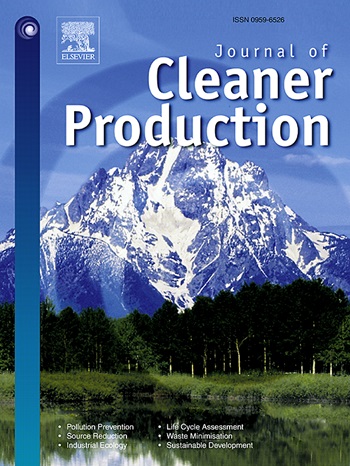Piezoelectric-induced band tilting: A double-edged sword in the antibiotic degradation process
IF 10
1区 环境科学与生态学
Q1 ENGINEERING, ENVIRONMENTAL
引用次数: 0
Abstract
The piezoelectric catalysis is a promising alternative technology for photocatalytic water treatment. However, different energy excitations may draw forth disparate active species generation, which further affects the decomposition path and product toxicity of antibiotics. Here, we developed ZnxCd1-xS homojunction (ZCS) as versatile catalysts for decomposing tetracycline (TC) under piezoelectric and photocatalytic conditions, respectively. XRD, TEM, FTIR and XPS results verified the successful fabrication of materials. An oxidative enhancement effect in piezoelectric catalysis was corroborated for the first time. Electrochemistry and ESR characterizations confirmed that, due to the band tilting induced by ultrasound, the valence band of ZCS achieved the redox potential required for hole-driven hydroxyl radical formation, which hardly happened in ZCS-based photocatalysis. Mechanistic studies revealed that piezocatalytic TC degradation relied on the synergistic effect between hydroxyl radical and singlet oxygen, while superoxide radical and holes severally dominated the photocatalytic process. Normalized degradation results demonstrated a superior mineralization capability of piezocatalysis. Photocatalysis directly decomposed TC molecules, whereas piezocatalysis tended to induce polymerization prior to fragmentation, leading to the distinct toxicities of degradation intermediates between piezocatalysis and photocatalysis. This study offers a new avenue for the regulation of reactive species and evoks a new thinking on the toxicity change of hydroxyl radical-induced pollutants.

压电感应带倾斜:抗生素降解过程中的双刃剑
压电催化是一种很有前途的光催化水处理替代技术。然而,不同的能量激发可能会产生不同的活性物质,从而影响抗生素的分解路径和产物毒性。在这里,我们开发了ZnxCd1-xS同质结(ZCS)作为在压电和光催化条件下分解四环素(TC)的多功能催化剂。XRD、TEM、FTIR和XPS实验结果验证了材料制备的成功。首次证实了压电催化中的氧化增强效应。电化学和ESR表征证实,由于超声诱导的能带倾斜,ZCS的价带达到了空穴驱动羟基自由基形成所需的氧化还原电位,而这在ZCS基光催化中很少发生。机理研究表明,压电催化降解TC依赖于羟基自由基和单线态氧的协同作用,而超氧自由基和空穴则分别主导着光催化过程。归一化降解结果表明,压电催化具有优越的矿化能力。光催化直接分解TC分子,而压电催化倾向于先聚合后破碎,导致压电催化与光催化之间降解中间体的毒性不同。本研究为活性物质的调控提供了新的途径,并对羟基自由基诱导污染物的毒性变化提出了新的思考。
本文章由计算机程序翻译,如有差异,请以英文原文为准。
求助全文
约1分钟内获得全文
求助全文
来源期刊

Journal of Cleaner Production
环境科学-工程:环境
CiteScore
20.40
自引率
9.00%
发文量
4720
审稿时长
111 days
期刊介绍:
The Journal of Cleaner Production is an international, transdisciplinary journal that addresses and discusses theoretical and practical Cleaner Production, Environmental, and Sustainability issues. It aims to help societies become more sustainable by focusing on the concept of 'Cleaner Production', which aims at preventing waste production and increasing efficiencies in energy, water, resources, and human capital use. The journal serves as a platform for corporations, governments, education institutions, regions, and societies to engage in discussions and research related to Cleaner Production, environmental, and sustainability practices.
 求助内容:
求助内容: 应助结果提醒方式:
应助结果提醒方式:


